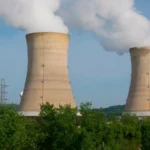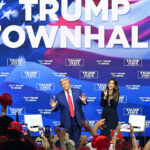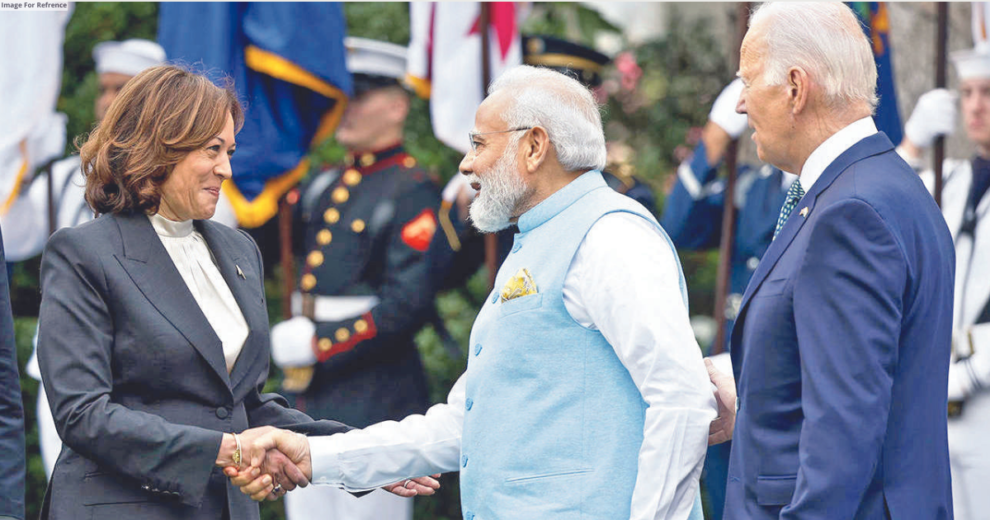Indian Prime Minister Narendra Modi is riding high. His triumphant visit to Washington in June, which featured a state dinner at the White House and a rare second address to a joint session of Congress, appears to mark a new chapter in the relationship between the United States and India following a quarter-century of ups and downs.
Modi’s visit was preceded by several major breakthroughs, including the recent US–India initiative on critical and emerging technology, which seeks to foster bilateral collaboration in areas such as artificial intelligence, biotechnology, quantum computing, 5G and cybersecurity. US semiconductor manufacturer Micron Technology recently announced that it plans to invest US$825 million in a new chip assembly and testing facility in India.
The US and India have also unveiled several defence agreements, including a deal for India to acquire 30 MQ-9B Predator armed drones from the US and a separate plan to produce F414 fighter jet engines for the Indian Air Force jointly with General Electric. These deals, which the US has never extended to a country that isn’t formally an ally, highlight the intensifying bilateral defence partnership.
The transformation is striking. Throughout the Cold War, the world’s oldest democracy and its largest remained essentially estranged. America’s initial indifference towards India was evident in President Harry Truman’s reaction when Chester Bowles asked to be the US ambassador. ‘I thought India was pretty jammed with poor people and cows wandering around the streets, witch doctors and people sitting on hot coals and bathing in the Ganges,’ Truman said, ‘but I did not realize that anybody thought it was important.’
America’s preference for alliances with anti-communist regimes led the US to establish relationships with a series of increasingly Islamist dictatorships in Pakistan. Meanwhile, India’s non-aligned democracy gravitated towards the secular Soviet Union. Non-alignment wasn’t well received in the US, where John Foster Dulles, President Dwight Eisenhower’s secretary of state, famously declared that ‘neutrality between good and evil is itself evil’.
The end of the Cold War, together with the reorientation of India’s foreign policy and its integration into the global economy, led to an improvement in US–India relations, but India’s detonation of a nuclear device in 1998 triggered US-led economic sanctions. President Bill Clinton’s visit to India in 2000, his final year in office, marked a major turning point, and George W. Bush’s administration built on the momentum by signing a defence agreement with India in 2005 and a landmark accord on civil nuclear cooperation in 2008. The positive trend persisted under both Barack Obama and Donald Trump and now appears to have reached a zenith under President Joe Biden.
Today, the US seems much more willing to accommodate India’s post-colonial obsession with strategic autonomy. Whereas the Hindu nationalist Modi stands in stark contrast to his secular predecessor, Manmohan Singh, there has been remarkable bipartisan support for deepening ties by five successive US presidents and three Indian prime ministers.
This shift has been partly driven by China’s geopolitical assertiveness under President Xi Jinping, which represents a radical departure from his predecessors’ adherence to the doctrine of China’s ‘peaceful rise’. The US clearly views China as its primary adversary and has been actively pursuing regional alliances to counter its growing influence.
India has traditionally been reluctant to pick sides, but China’s repeated encroachments on its territory across the disputed Himalayan border, and its killing of 20 Indian soldiers in June 2020, have rendered neutrality untenable. While India maintains its independent posture, the recent G7 summit in Hiroshima notably included the second-ever in-person Quad summit between Biden, Modi, Japanese Prime Minister Fumio Kishida and Australian Prime Minister Anthony Albanese. During the meeting, the four leaders reaffirmed their commitment to a free, open and inclusive Indo-Pacific.
The message to China is clear. While India maintains that it is not a US ally but a partner, it has increasingly aligned itself with the democratic West in its escalating rivalry with communist China.
But it would be a mistake to view India–US relations solely through a China lens. America and India have far more in common than is generally acknowledged: democracy, a common language and a dedication to fostering innovation and entrepreneurship. As Henry Kissinger once observed, the two countries have ‘no conflict of interest in the traditional and fundamental sense’.
The most important factor contributing to the deepening ties between the US and India is the growing number of Indian Americans, which exceeds four million. Indian Americans are disproportionately affluent, with the highest median income of any US ethnic group, including whites. They are also becoming an increasingly influential voting bloc, and their prominent roles in political fundraising, on congressional staffs and in government offices have given rise to a so-called Samosa Caucus. The US has had two governors and seven members of Congress of Indian heritage. US Vice President Kamala Harris’s mother is Indian, and former US ambassador to the United Nations Nikki Haley—currently running for president—is the daughter of Punjabi Sikh parents.
While their political views vary, many Indian Americans have been increasingly outspoken on issues related to India. The continuous influx of more than 150,000 Indian students to the US every year contributes to this dynamic. In addition to injecting nearly US$8 billion into the US education system and related services, these migrants ensure a constant infusion of fresh ideas and perspectives. In the long run, Indian Americans may help shape US policy on India in the same way that Jewish Americans play a role in shaping US policy on Israel.
In the past, it was often said that Pakistan was a US ally but not a friend, while India was a friend but not an ally. With the US out of Afghanistan, Pakistan has become a less significant ally. But, while India still isn’t one, owing to its insistence on strategic autonomy, even US sceptics who say the two countries’ interests are more aligned than their values concede that those interests warrant closer cooperation. Modi’s visit was one more indication of how close that cooperation has become.
Source : The Strategist
















